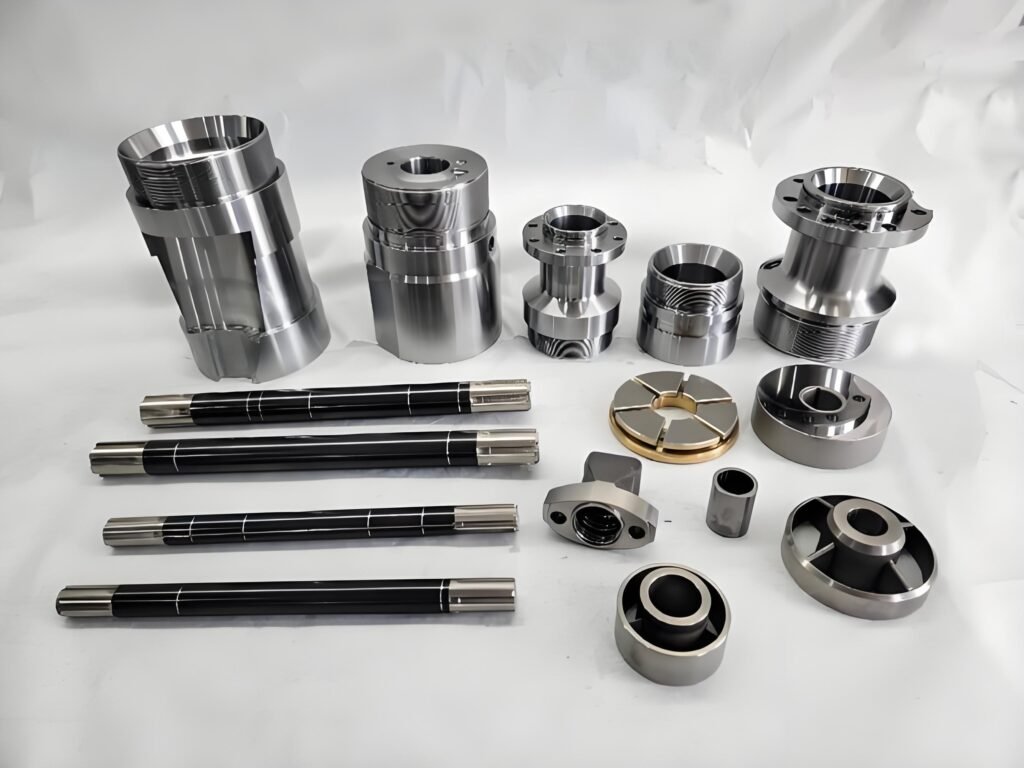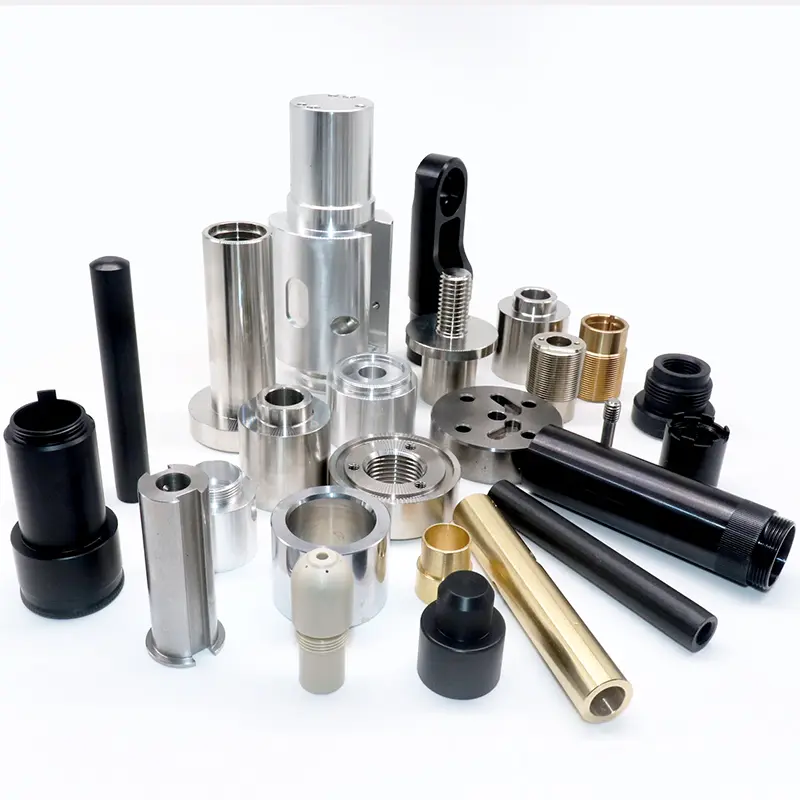Explore Jupaicnc’s Medical CNC Machining Portfolio: 200 Successful Case Studies Showcasing Precision & Innovation

Jupaicnc’s Medical CNC Machining Portfolio showcases 200 successful case studies, highlighting their expertise in precision manufacturing for the medical industry. The portfolio emphasizes key features such as advanced technology, rigorous quality control, and customized solutions tailored to client needs. Advantages include enhanced patient safety, improved product reliability, and faster turnaround times. Distinctive qualities, such as a commitment to innovation and adherence to regulatory standards, position Jupaicnc as a leader in medical CNC machining, reinforcing trust and excellence in healthcare manufacturing. Jupaicnc’s Medical CNC Machining Portfolio showcases 200 successful case studies that highlight the company’s expertise in precision machining for the healthcare industry. This impressive collection underscores Jupaicnc’s commitment to innovation, quality, and reliability, demonstrating their capability to meet complex medical specifications. Key features include advanced technology, customization options, and adherence to stringent regulatory standards. The advantages of partnering with Jupaicnc include improved efficiency, reduced production costs, and enhanced patient outcomes. With a strong focus on collaboration and customer satisfaction, Jupaicnc stands out as a leader in medical CNC machining solutions.
Protecting Your Intellectual Property in Medical Device CNC Prototyping: The Jupaicnc NDA Guide

The WordPress post “How to Protect IP in Medical Device CNC Prototyping – Jupaicnc NDA Process” outlines essential strategies for safeguarding intellectual property (IP) during the CNC prototyping of medical devices. It emphasizes the importance of Non-Disclosure Agreements (NDAs) as a fundamental tool in protecting sensitive information. Key features include a step-by-step guide to implementing effective NDA practices, highlighting legal frameworks and ensuring confidentiality throughout the prototyping phase. The advantages presented revolve around reducing the risk of IP theft, fostering trust between collaborators, and maintaining competitive advantage. Additionally, the article distinguishes Jupaicnc’s tailored NDA process, showcasing its commitment to securing client innovations in a rapidly evolving medical technology landscape. The WordPress post “How to Protect IP in Medical Device CNC Prototyping – Jupaicnc NDA Process” outlines essential strategies for safeguarding intellectual property in the prototyping phase of medical devices. It emphasizes the importance of Non-Disclosure Agreements (NDAs) as a foundational step in protecting sensitive data and proprietary technologies. Key features include a detailed explanation of the NDA process, best practices for drafting effective agreements, and tips for maintaining confidentiality throughout the prototyping journey. The advantages of employing Jupaicnc’s NDA process are highlighted, such as enhanced security for innovations, increased trust with partners, and a competitive edge in the market. The post distinguishes itself by combining expert insights with actionable advice tailored to the unique challenges of the medical device industry.
Enhance Your Medical Prototype with Jupaicnc’s Expert Design-for-Manufacturing (DFM) Consultation

Jupaicnc’s Medical Prototype Design-for-Manufacturing (DFM) Consultation services streamline the development of medical devices by integrating design and manufacturing processes from the outset. This approach minimizes production costs and time while ensuring the highest quality and regulatory compliance. Key features include expert guidance on material selection, prototyping techniques, and optimization for manufacturability. The distinctive qualities of Jupaicnc’s service lie in its commitment to innovation and collaboration, enabling clients to bring functional and market-ready medical products to life with efficiency and precision.
Essential CNC Machining RFQ Checklist for Medical Device Prototypes – Free Template from Jupaicnc

The “Medical Device Prototype CNC Machining RFQ Checklist – Jupaicnc Free Template” offers a comprehensive guide for efficiently requesting quotes for CNC machining in medical device prototyping. This checklist ensures that all critical factors are considered, including design specifications, materials, and regulatory compliance, streamlining the RFQ process. Its pivotal features include a user-friendly format, customizable sections, and an emphasis on essential industry standards. The template enhances communication with suppliers, reduces errors, and accelerates project timelines, making it an invaluable resource for professionals in the medical device industry seeking to improve their prototype development strategy.
Revolutionizing Manufacturing: How Jupaicnc Implements GD for Enhanced Efficiency

In the post “How Jupaicnc Implements GD,” the author explores the innovative use of GD technology by Jupaicnc to enhance manufacturing processes. Key features include seamless integration with existing systems, improved efficiency, and real-time data analysis. The advantages highlight reduced operational costs, increased production speed, and enhanced product quality. Distinctive qualities such as user-friendly interfaces and robust support systems set Jupaicnc apart in the industry, showcasing their commitment to driving technological advancement and meeting customer needs.
Essential Post-Machining Sterilization for Medical Prototypes: Jupaicnc Standards Explained

This WordPress post delves into the essential post-machining sterilization processes for medical prototypes, outlining Jupaicnc’s rigorous standards. It highlights pivotal features such as advanced sterilization techniques that ensure compliance with health regulations, reduce infection risks, and enhance product safety. The advantages of these processes include improved reliability and extended lifespan of medical devices. Notably, Jupaicnc’s distinctive qualities, such as its commitment to innovation and precision, set it apart in the medical manufacturing industry, making it a trusted partner for healthcare providers.
Enhancing Traceability in Medical Device CNC Machining with Jupaicnc’s Digital QC System

The WordPress post “Traceability in Medical Device Prototype CNC Machining – Jupaicnc’s Digital QC System” highlights the importance of traceability in the manufacturing of medical device prototypes. It details Jupaicnc’s innovative digital quality control (QC) system, which ensures rigorous monitoring and documentation throughout the CNC machining process. Key features include real-time data tracking, comprehensive audit trails, and automated compliance checks, all of which enhance product reliability and safety. The advantages of this system include improved efficiency, reduced errors, and simplified regulatory adherence, making Jupaicnc a leader in precision machining. Its distinctive quality lies in the integration of cutting-edge technology with industry-best practices, ensuring high-quality outcomes in the critical field of medical device production.
Enhance Medical CNC Prototypes with Hydrophobic Surface Treatment | Jupaicnc Technology

The post “Hydrophobic Surface Treatment for Medical CNC Prototypes – Jupaicnc Technology” highlights the innovative hydrophobic treatments applied to CNC prototypes used in the medical field. This technology creates surfaces that repel water and other fluids, ensuring enhanced sterility and cleanliness. Key advantages include improved durability, easier maintenance, and increased operational efficiency of medical devices. Jupaicnc’s unique approach stands out due to its state-of-the-art techniques and commitment to quality, making their prototypes not only functional but also trustworthy in critical medical applications.
Master Cobalt-Chrome Alloy Machining for Durable Medical Prototypes | Jupaicnc Process Guide

This post explores the innovative process of machining cobalt-chrome alloy for durable medical prototypes at Jupaicnc. It highlights the alloy’s exceptional strength, biocompatibility, and resistance to corrosion, making it an ideal choice for medical applications. The article emphasizes Jupaicnc’s advanced machining techniques that ensure precision and high-quality finishes, resulting in prototypes that meet strict regulatory standards. Additionally, it underscores the advantages of using cobalt-chrome in enhancing the longevity and performance of medical devices, positioning Jupaicnc as a leader in the manufacturing of reliable medical solutions. This post explores the advanced machining of cobalt-chrome alloy for durable medical prototypes using the Jupaicnc process. It highlights the alloy’s exceptional strength, biocompatibility, and resistance to wear, making it ideal for medical applications. The Jupaicnc technique enhances precision and efficiency, ensuring high-quality prototypes that meet stringent industry standards. Key advantages include reduced production time and cost-effectiveness, showcasing its unique ability to address the demanding requirements of the medical field. This post positions Jupaicnc as a leader in innovative manufacturing solutions for medical technology.
Choosing Between Titanium and Stainless Steel for Medical Device CNC Prototyping: A Jupaicnc Guide

This post explores the key differences between titanium and stainless steel in the context of CNC prototyping for medical devices. It highlights titanium’s superior strength-to-weight ratio, corrosion resistance, and biocompatibility, making it ideal for implants and surgical tools. Conversely, stainless steel is noted for its cost-effectiveness, ease of machining, and durability. The guide emphasizes the importance of material selection based on application-specific requirements, offering insights into the advantages and unique characteristics of each material to aid manufacturers in making informed decisions for medical device prototyping. This guide explores the critical comparison between titanium and stainless steel in the context of CNC prototyping for medical devices. It highlights the unique properties of each material, showcasing titanium’s superior biocompatibility, strength, and corrosion resistance, making it ideal for implants and long-term medical applications. Conversely, stainless steel is lauded for its cost-effectiveness and ease of machining, making it a popular choice for various medical instruments. The post delves into each material’s advantages and challenges, guiding manufacturers in making informed decisions for optimal performance and safety in medical device production.
